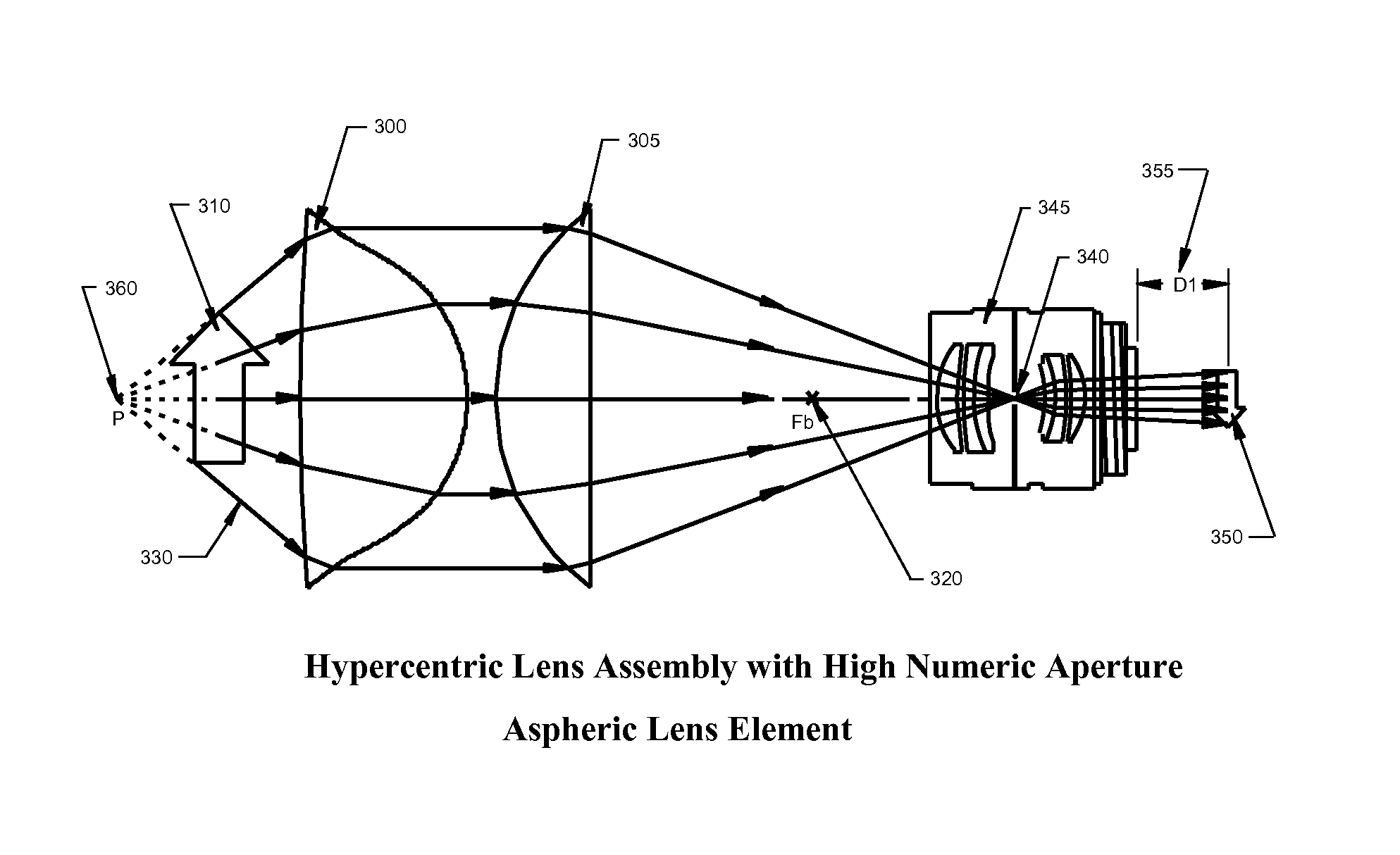Hypercentric lens assembly with high numeric aperture aspheric element
- Summary
- Abstract
- Description
- Claims
- Application Information
AI Technical Summary
Benefits of technology
Problems solved by technology
Method used
Image
Examples
Example
DETAILED DESCRIPTION OF THE DRAWINGS
[0012]FIG. 1A shows a conventional lens (100), such as a microscope objective, having an optical axis (110). Said lens 100 views a cylindrical object (120) having a top (121) that is essentially perpendicular to the optical axis, and a side (122) that is parallel to the optical axis. The lens 100 forms an image (140) only of the top (121) of the object.
[0013]FIG. 1B shows a hypercentric lens (150) having an optical axis 110. Said lens 150 views a cylindrical object 120 having a top 121 that is essentially perpendicular to the optical axis and a side 122 that is parallel to the optical axis. The lens 150 forms an image 140 of the top 121 as well as the side 122 of the object.
[0014]FIG. 2 shows an example of a prior art hypercentric lens system in which a spherical lens element (200) receives rays of light (230) from an object (210) and re-directs them toward a small pinhole or aperture (240) that is located beyond the back focus (220) of the lens. ...
PUM
 Login to View More
Login to View More Abstract
Description
Claims
Application Information
 Login to View More
Login to View More - R&D
- Intellectual Property
- Life Sciences
- Materials
- Tech Scout
- Unparalleled Data Quality
- Higher Quality Content
- 60% Fewer Hallucinations
Browse by: Latest US Patents, China's latest patents, Technical Efficacy Thesaurus, Application Domain, Technology Topic, Popular Technical Reports.
© 2025 PatSnap. All rights reserved.Legal|Privacy policy|Modern Slavery Act Transparency Statement|Sitemap|About US| Contact US: help@patsnap.com



